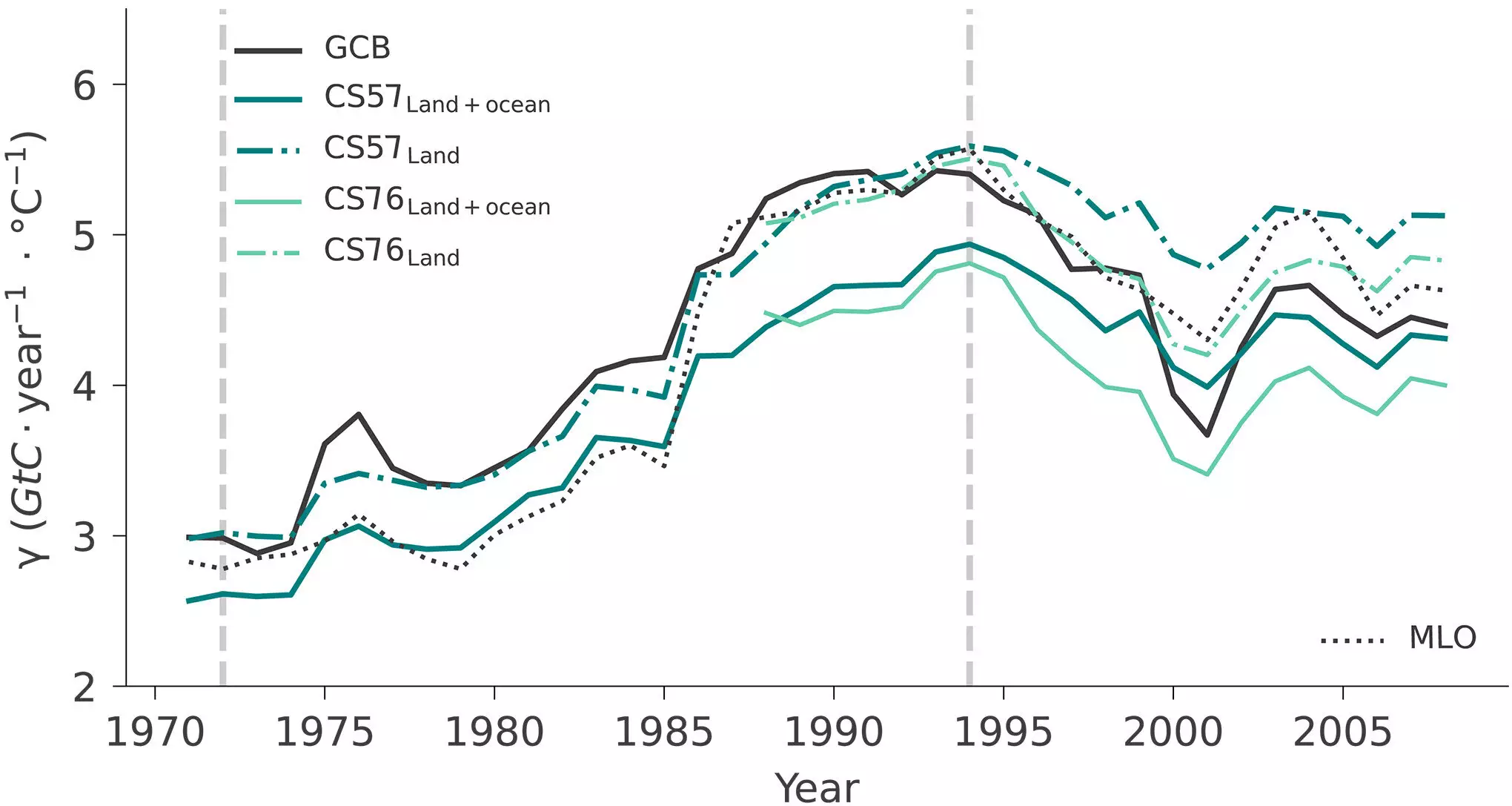Recent findings from a comprehensive study conducted by researchers at the Max Planck Institute for Biogeochemistry and Leipzig University challenge long-held beliefs about the relationship between atmospheric carbon dioxide (CO₂) levels and tropical temperatures. Traditionally, it was understood that rising CO₂ levels in our atmosphere were closely linked to increasing global temperatures, particularly in tropical regions. However, between 1959 and 2011, research indicates that the atmospheric CO₂ content reacted with twice the intensity to tropical temperature variations than previously recognized, recruiting El Niño events into the causal narrative.
Globally, terrestrial ecosystems have long been recognized as a crucial carbon sink, absorbing approximately one-third of human-induced CO₂ emissions. This natural mechanism has been a cornerstone in climate mitigation strategies. Nevertheless, research conducted in the 1980s and 1990s suggested increased volatility in carbon storage, particularly as it related to tropical temperature fluctuations. This raises critical questions about how stable these ecosystems truly are in the face of transitioned climate dynamics, particularly against the backdrop of intensified El Niño events.
What sets this study apart is its emphasis on the pivotal role played by specific extreme El Niño occurrences, particularly those in 1982/83 and 1997/98. These events are characterized by severe droughts and heat waves, significantly hampering plant growth and thus diminishing carbon absorption capabilities. During these periods, ecosystems, rather than sequestering carbon, can become sources of carbon emissions. This counterproductive cycle leads to an increase in atmospheric CO₂, challenging the narrative that rising CO₂ is primarily a consequence of prolonged climate change.
The researchers offer a nuanced argument, suggesting that the marked increase in atmospheric CO₂ should not be misconstrued as evidence of a systemic shift in the carbon cycle influenced by climate change. Instead, it is framed as a consequence of the internal variability of the climate, a nuanced perspective that underscores the complexity of environmental interactions. According to Na Li, the lead author of the study, the sensitivity observed is not indicative of a fundamental transformation within the carbon cycle but rather a reaction to a combination of extreme events and their far-reaching global effects.
A significant contribution of this research is the articulation of the “slow-in, fast-out” nature of carbon dynamics within ecosystems. Carbon may be absorbed slowly over time, but extreme weather phenomena like El Niño can cause rapid releases, exacerbating the already critical situation of atmospheric CO₂ levels. Professor Ana Bastos indicates that understanding this delicate balance could refine our expectations of how ecosystems interact with climatic variations over time.
The implications of this research are profound. As the scientific community continuously refines climate projections, it is vital to account for the fluctuating nature of carbon dynamics, particularly with respect to extreme weather events. The previous assumptions linked heightened sensitivity of CO₂ accumulation in tropical areas to systemic climate-related shifts. Instead, this new understanding emphasizes the necessity of incorporating episodic extremes, such as El Niño, into climate models.
Ultimately, a finer comprehension of how extraordinary climatic phenomena influence carbon dynamics will significantly enhance our predictions of future climate scenarios. As articulated by junior professor Dr. Sebastian Sippel, advancing our understanding in this domain stands to refine forecasting models, thereby equipping policymakers and researchers with necessary tools to confront the challenges posed by climate change. This study opens new pathways for inquiry, emphasizing the importance of rigorous and dynamic modeling in a world that continues to grapple with climatic extremes. The interplay between natural variability and anthropogenic influences is complex—a reality that must be embraced as we seek to navigate towards a sustainable future.

